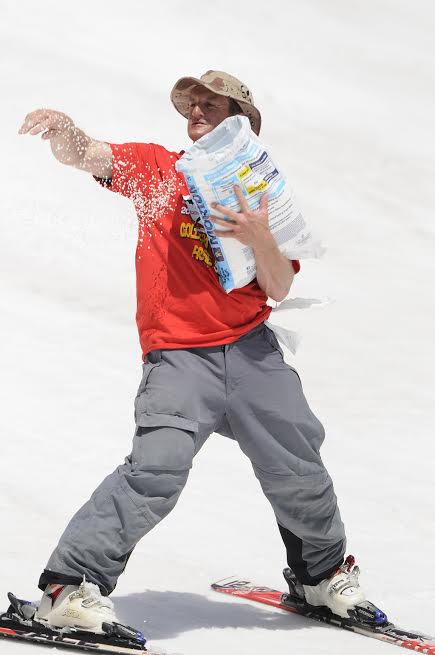“Requiem of Ice,” the new film from Portland-based Uncage the Soul Productions, doesn’t just delve deep into the inner-most regions of the ice caves of Mount Hood’s Sandy Glacier. It attempts to capture the character and voice of the glacier cave itself.
The resulting seven-minute film is an ambitious feast for the eyes, with stunning time-lapse and aerial footage of the mountain’s clouds, water, rocks, stars, snow, and light — and especially its melting ice.
The project was inspired by the ongoing explorations of Brent McGregor and Eddy Cartaya, who have been mapping and surveying the caves since 2011. Uncage the Soul owner John Waller and his colleague Ben Canales made five trips to the Sandy Glacier Caves in 2013 and 2014.
“We saw a real opportunity here to share that place visually, and to give the cave itself a voice,” said Waller.
Their work involved hauling camera equipment up onto the mountain and shooting in wet, cold, dark, dirty and sometimes dangerous locations, because the ice they were filming is melting, and the caves are basically collapsing as climate change takes its toll.
“Between access, logistics and safety concerns, this was one of the most challenging projects we’ve ever done,” Waller said. “We had to work hard for every second of video we got.”
As Waller and Canales captured their images from the mountain they also scripted an interpretive narrative from the perspective of the ice cave, voiced by Canadian voice actor Tish Iceton.
The idea, in Waller’s words, was to move beyond the standard formula of pretty time-lapse images with a pleasing soundtrack, to “add more depth and meaning to our work.”
Here is the resulting film in its entirety:
{jumi[uncage-ice.txt]}
For the more literal-minded among us, it may be worth stating directly that the ice caves of Sandy Glacier are not dying a natural death. Their deterioration is the result of the man-made phenomenon of climate change, which is unequivocally caused by rising levels of human-produced greenhouse gases in the atmosphere.
As a result of global warming, the Mount Hood glacier closest to Portland (like glaciers everywhere on the planet) is melting and shrinking. Before long it will likely go the way of the once-beautiful Paradise Ice Caves on Mount Rainier. I explored and photographed the Paradise Caves in the 1990s, and sadly they no longer exist today.
Reversing the planet’s warming trend is possible, but it would require radical change. I use the word radical because it involves a rejection of the central premise of capitalism: that growth is an inherently good thing and vital for human progress.
As the great climate writer Elizabeth Kolbert explained in a recent essay in the New York Review of Books, simple solutions do not exist because “when you tell people what it would actually take to reduce carbon emissions, they turn away.”
Take the amount of greenhouse gases in the atmosphere, the amount being burned, future population projections and other key figures, and then calculate what it would take to reverse the warming trend — and you come up with a global target of about 2,000 watts per person. Kolbert explains what that means:
Most of us don’t think about our energy consumption—to the extent we think about it at all—in terms of watts or watt-hours. All you really need to know to understand… is that, if you’re American, you currently live in a 12,000-watt society; if you’re Dutch, you live in an 8,000-watt society; if you’re Swiss, you live in a 5,000-watt society; and if you’re Bangladeshi you live in a 300-watt society. Thus, for Americans, living on 2,000 watts would mean cutting consumption by more than four fifths; for Bangladeshis it would mean increasing it almost by a factor of seven.
To investigate what a 2,000-watt lifestyle might look like, the authors of the [2,000-watt] plan came up with a set of six fictional Swiss families. Even those who lived in super energy-efficient houses, had sold their cars, and flew very rarely turned out to be consuming more than 2,000 watts per person. Only “Alice,” a resident of a retirement home who had no TV or personal computer and occasionally took the train to visit her children, met the target.
These daunting truths are inconvenient on many levels – economic, social, and environmental. Still, anyone who loves snow and ice and mountains in winter should pay attention, because the future of snow sports lies in the balance — along with a whole lot more. The sight of glacial ice melting into flowing water is a beautiful thing to behold, but the current behind it is deeply worrisome.
Last modified: November 19, 2014


